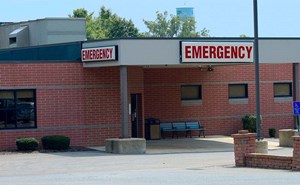Last Tuesday, the Medicare Payment Advisory Commission (MedPAC) issued another annual report to Congress. As you may recall, MedPAC issued a report to Congress in March highlighting its recommendations for updating Medicare payment systems, including the physician fee schedule (PFS). ACEP did not agree with some of the recommendations in that report. Luckily MedPAC’s recommendations are NOT BINDING, meaning that Congress and the Centers for Medicare & Medicaid Services (CMS) don’t have to adopt them.
This second MedPAC report touches upon a range of issues, but of note, it includes a chapter dedicated to private equity (PE) and its impact on Medicare. The PE chapter just includes background information and does NOT include any recommendations. Some key points from that chapter include:
- Gaps in Medicare data—MedPAC states that the data regarding ownership of providers that are submitted to CMS are incomplete and sometimes inaccurate. The Commission believes that more complete ownership data and greater transparency of ownership are highly important. However, it also states that CMS will have a difficult time identifying parent organizations for large numbers of Medicare providers.
- PE funds’ business models—MedPAC examined PE business models in three key sectors: hospitals, nursing homes, and physician practices. It found that PE firms use several strategies to make the providers they own in these sectors more profitable—many of which are also used by for-profit providers that are not PE owned. Some of those strategies focus on increasing revenues while others focus on reducing costs. One strategy MedPAC notes in its report is creating larger physician practices by acquiring a “platform” practice and then buying smaller practices in the same market.
- The effect of PE investment on Medicare costs and quality of care—MedPAC examined evidence of the effects of PE investments in hospitals, nursing homes and physician practices. It found that PE-owned hospitals tended to have lower costs and lower patient satisfaction than other for-profit and nonprofit hospitals. However, it could not conclude that PE ownership caused the lower costs or satisfaction. For physician practices, MedPAC found that there is a lack of peer-reviewed, empirical evidence of the impact of PE ownership on Medicare spending, quality of care, and patients’ experience.
Beyond the chapter on private equity, the report also includes a chapter on alternative payment models (APMs). MedPAC conducted an analysis of existing APMs being tested by the Center for Medicare & Medicaid Innovation (CMMI) within CMS and found that in some cases, health care providers are participating in multiple models. For example, some clinicians are participating both in an accountable care organization (ACO) APM and an episode-based model like the Bundled Payments for Care Improvement Advanced (BPCI Advanced) Model. Since different models test different payment structures and include different financial incentives, it’s hard to know which model works the best. In other words, if clinicians in multiple models wind up reducing health care costs overall, how would CMMI be able to attribute those savings to each individual model and determine which model actually helped lower costs? Due to this issue caused by overlapping model participation, MedPAC recommends that CMMI implement a smaller, more harmonized portfolio of APMs that are designed to work together.
MedPAC’s recommendation makes sense IF you only look that the evidence that it includes in the report. One major point that MedPAC fails to fully address is the fact that many specialists, including emergency physicians, do not have the opportunity to participate in ANY APM—so limiting the number of APMs could shut you all out from participating in one going forward. MedPAC does mention the fact that CMMI has yet to adopt any physician-focused payment models recommended by the Physician-Focused Payment Model Technical Advisory Committee (PTAC)—the federal advisory committee established by the Medicare Access and CHIP Reauthorization Act (MACRA). However, the Commission does not explicitly recommend that CMMI adopt any of the PTAC-recommended models, including ACEP’s emergency medicine-focused APM, the Acute Unscheduled Care Model (AUCM).
Overall, the health care providers who do actually participate in more than one APM are mainly large health care systems or large multi-specialty groups. Primary care physicians also have amble opportunities to participate in APMs. ACEP had repeatedly requested that CMS increase the number of APMs that specialists can participate in, starting with the AUCM. Recommendations such as the one included in the MedPAC report will definitely NOT help convince CMMI to adopt more physician-focused APMs!
Finally, of interest, MedPAC includes a chapter on access to care in rural areas. MedPAC examined the growing number of rural hospital closures, which could impact Medicare beneficiaries’ access to care. To study the causes of rural hospital closures, the Commission conducted interviews with stakeholders from three communities that experienced a recent hospital closure and analyzed a cohort of 40 rural hospitals that closed between 2015 and 2019. These stakeholders reported that after their local hospital closed, the communities focused on maintaining access to emergency department care, urgent care, and primary care.
This rural chapter also discusses a new provision from the Consolidated Appropriations Act, 2021 that will allow certain hospitals to convert to a “rural emergency hospital” (REH) starting in 2023. An REH will not provide inpatient services, but only emergency and other outpatient services—and it will receive higher Medicare reimbursement rates for these services. ACEP held a meeting with CMS staff who are in charge of implementing this provision a couple weeks ago to provide our initial feedback. During the meeting, we stated that we want patients to receive high quality care in these facilities—and that CMS can make sure that happens by having board-certified emergency physicians overseeing the care. Although the law allows a wide range of provider types to provide emergency care in REHs, it will be important for CMS to require emergency physician oversight at all times.
Even though the new REH designation does not begin until 2023, CMS could start establishing regulatory requirements for these new facilities in the Calendar Year (CY) 2022 Outpatient Prospective Payment System (OPPS) regulation. The OPPS proposed reg could come out anytime in the next couple of weeks, so stay tuned for more information on this important provision!
Until next week, this is Jeffrey saying, enjoy reading regs with your eggs.






